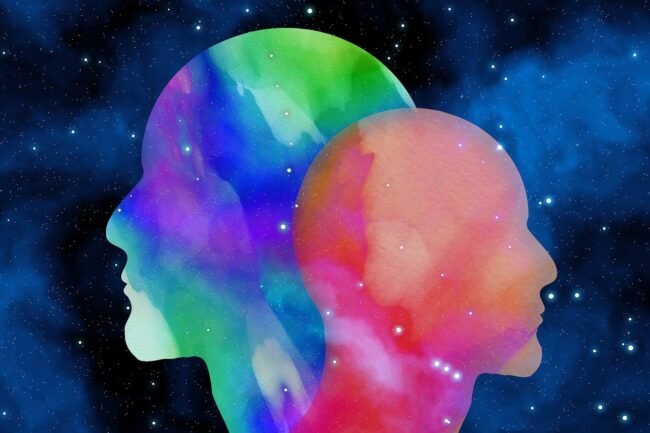Love and Its Deep Meaning: Psychology, Biology, and History Explained | 2025. Love is one of the most powerful emotions known to humanity. Across cultures, religions, and generations, it has been celebrated, studied, and questioned. This article offers a complete exploration of love’s etymology, psychological and biological theories, and its profound importance today and into the future.
Table of Contents
- Introduction
- Etymology of Love
- Psychological Theories of Love
- Biological Theories of Love
- Modern Perspectives on Love
- FAQ About Love
- Conclusion
Introduction
Love transcends language and logic. Whether it’s the tender care between family members, the electrifying excitement of romance, or the selfless compassion for humanity, love shapes human experience in ways few other emotions can match.
Today, with insights from psychology, biology, and history, we can better understand how love influences us individually and collectively.
Etymology of Love
The word “love” finds its roots in the Proto-Indo-European term leubh, meaning “care” or “desire.” It evolved into Latin libet and Old English lufu. Throughout time, the meaning has expanded to include a wide array of emotions and states, from deep affection to erotic passion.
Love Across Cultures
Different languages have distinct words for various forms of love. For instance, ancient Greeks distinguished between agape (unconditional love), eros (romantic love), philia (friendship), and storge (familial love).
Psychological Theories of Love
Robert Sternberg’s Triangular Theory
Introduced in the 1980s, Sternberg’s triangular theory posits that love is composed of three essential components:
- Intimacy – Emotional closeness and connectedness
- Passion – Physical attraction and sexual desire
- Commitment – The decision to maintain love over time
Combinations of Love Types
- Romantic Love: Intimacy + Passion
- Companionate Love: Intimacy + Commitment
- Consummate Love: Intimacy + Passion + Commitment
Attachment Theory
Psychologist Zick Rubin highlighted love through attachment, caring, and intimacy, differentiating it from simple liking or admiration. His work helped quantify love in relationships, setting the foundation for modern relationship counseling.
John Lee’s Color Wheel Model
John Lee, a Canadian psychologist, compared love to primary and secondary colors:
- Eros (Romantic, passionate love)
- Ludus (Playful, game-playing love)
- Storge (Family love, friendship-based)
Secondary styles include:
- Mania (Obsessive love)
- Pragma (Practical love)
- Agape (Selfless love)
Biological Theories of Love
Helen Fisher’s Research
Renowned anthropologist Helen Fisher broke down love into three biological stages:
- Lust – Driven by hormones like testosterone and estrogen
- Attraction – Controlled by dopamine, norepinephrine, and serotonin
- Attachment – Associated with oxytocin and vasopressin
The Chemistry of Love
When people fall in love, brain chemicals surge, creating feelings of euphoria, obsession, and long-term attachment. These chemicals evolved to promote mating, bonding, and survival.
Evolutionary Importance
From an evolutionary standpoint, love is essential for reproduction and raising offspring, ensuring the continuation of the species.
Modern Perspectives on Love
Love in 2025 and Beyond
Today, love faces new challenges and opportunities with technology, long-distance relationships, and changing societal norms. Yet the core need for connection remains unchanged.
Love and Mental Health
Numerous studies show that people who experience strong loving relationships enjoy better mental and physical health. (Read more: Mental Health and Love in 2025).
Love in Different Cultures
Despite globalization, love expressions vary widely. For example, arranged marriages still thrive in parts of India, while Western societies often emphasize romantic love over practical considerations.
FAQ About Love
What is the true definition of love?
Love is a complex emotion involving deep affection, passion, and commitment. It is experienced across many forms, including romantic, familial, platonic, and selfless love.
Is love purely biological?
While love has biological roots, including hormonal responses, it is also shaped by psychological, cultural, and social factors.
Can love last a lifetime?
Yes, when nurtured with intimacy, commitment, and passion, love can grow and evolve over decades.
How does technology affect love today?
Technology offers new ways to connect but can also create challenges like long-distance relationships and superficial interactions.
Conclusion
Love is an eternal, transformative force that continues to define humanity. Understanding its psychological and biological foundations allows us to appreciate it more deeply. As we move into 2025 and beyond, nurturing genuine connections becomes even more crucial for personal happiness and societal well-being.
Whether you’re falling in love, building a family, or cultivating friendships, remember: love is not just an emotion—it’s the essence of life.
Internal Link: Read more about the future of love and health here.
External Link: Original Britannica Article on Love

Last Updated on 6 months ago by Ravikant Janrao



